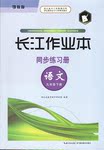题目内容
— If you help us solve the problems, you may go to America for a free trip.
— It’s a very nice ________, but I really can’t accept it.
A.reason B.excuse C.offer D.decision
练习册系列答案
 长江作业本同步练习册系列答案
长江作业本同步练习册系列答案
相关题目
题目内容
— If you help us solve the problems, you may go to America for a free trip.
— It’s a very nice ________, but I really can’t accept it.
A.reason B.excuse C.offer D.decision
 长江作业本同步练习册系列答案
长江作业本同步练习册系列答案